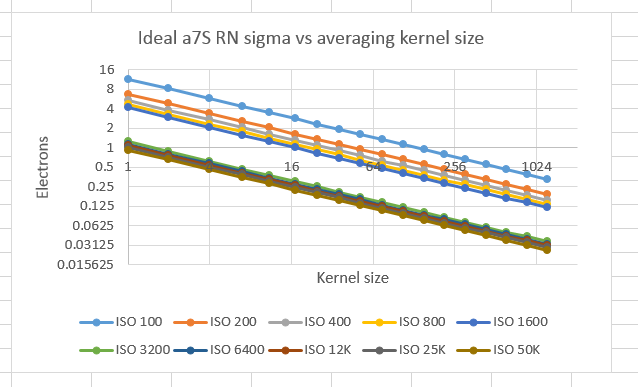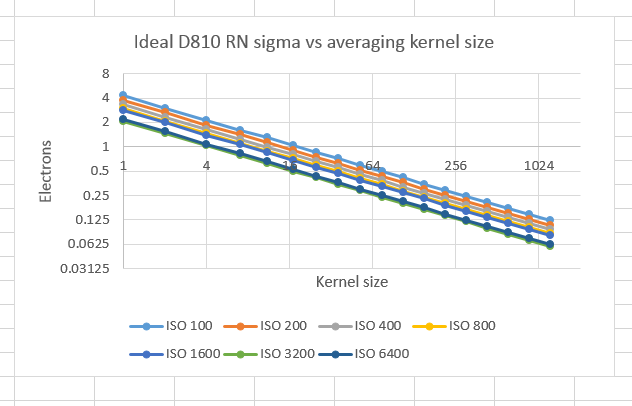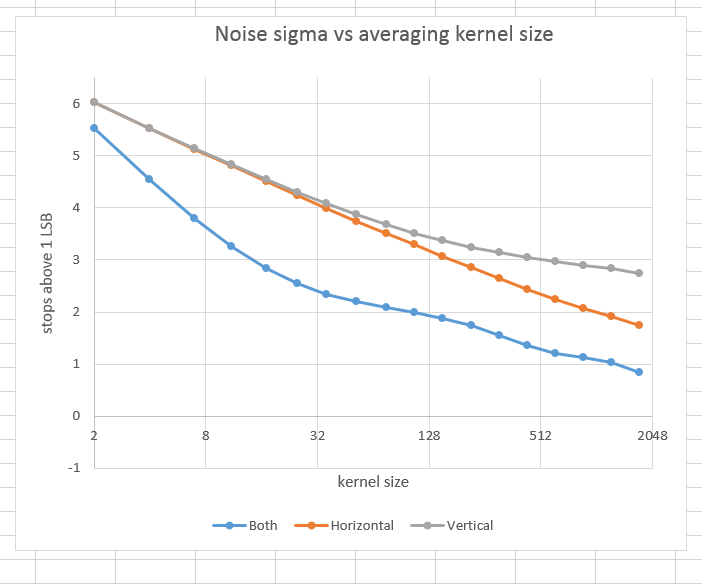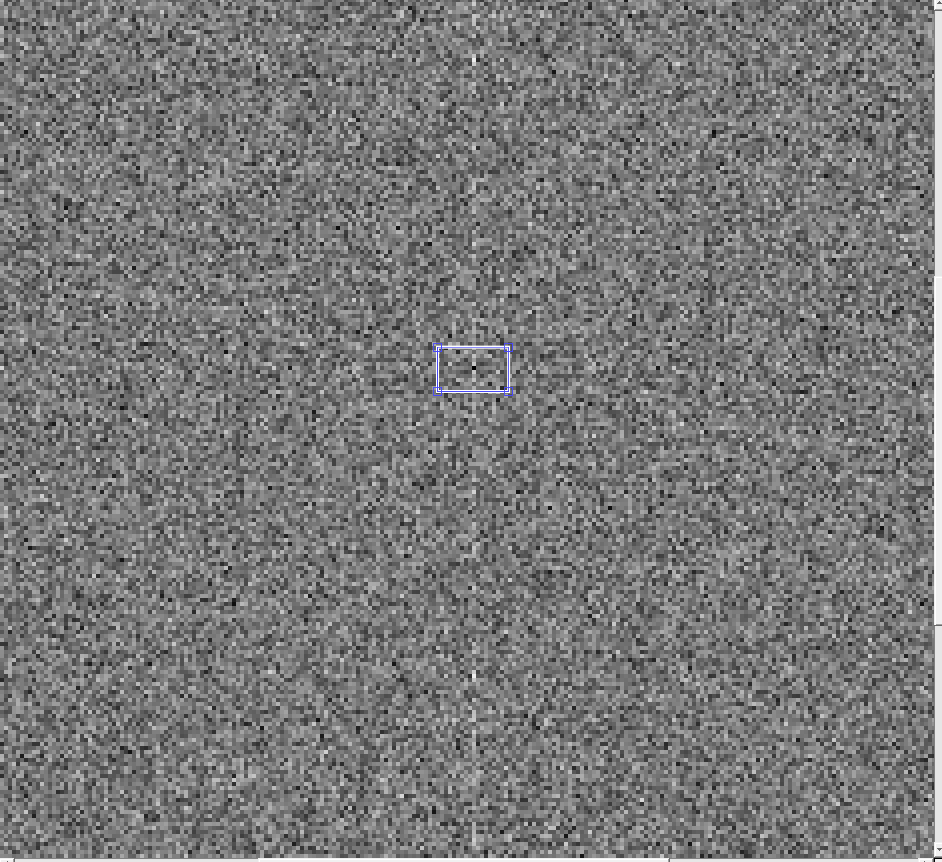Today, I’ll apply the same read noise analysis approach of the last few posts to a new camera, the Sony alpha 7S. The a7S has the — unique in my testing — ability to change its conversion gain as a function if the ISO setting. The conversion gain jumps when the ISO dial is turned… [Read More]
Archives for October 2014
D810 ISO I00 filtered dark-field images
I published some statistics yesterday on D810 dark-field images of various ISOs that had been filtered with low-pass filters of various sizes. I used 1xn kernels to filter out horizontal variations and leave the vertical ones, and nx1 kernels to to filter out vertical variations and leave the horizontal ones. As an adjunct to the… [Read More]
D810 read noise quality vs ISO
I performed the horizontal and vertical filtering operations of the previous post on D810 dark-field images from ISO 100 to ISO 6400 in whole-stop steps. Here’s the result, for horizontal kernels, which preserve vertical features: And for vertical kernels: You’ll notice that the horizontal kernel results are more nearly straight lines in the log-log graphs,… [Read More]
Convolution filtering and read noise
A reader commented on the previous post, and posted this link to a web page where he analyzed the spatial aspects of the read noise on a Sony NEX-6. He contends, with excellent justification, that the construction of the sensor on that camera, and sensors with similar column-parallel ADCs, creates more low-frequency read noise in… [Read More]
In search of a read noise ugliness metric
Beauty is in the mind of the beholder, so ’tis said. I guess ugliness must be as well. Maybe I’m on a fool’s mission, but I’d like to figure out a way to mathematically calculate the visual effect of read noise. If you look at the histogram of dark-field noise for a digital camera, providing… [Read More]
- « Previous Page
- 1
- 2
- 3
- 4
- …
- 6
- Next Page »




